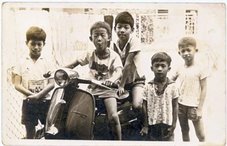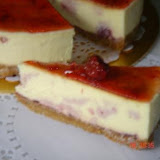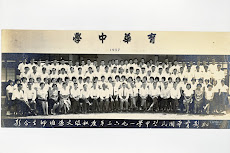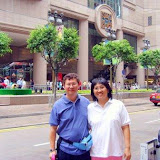If there is a contemporary proverb to describe Kajang Town, I would like to recommend this: “If you come to the center of this town, open your car windows wide and smell the special aroma that has made Kajang famous and indulge on the exotic cuisine while enjoying the uniqueness of this 200 year old municipality.”
Kajang was first established in 1807 and mushroomed into a modern township as it enjoys the burgeoning rubber estate business at the turn of the 20th century. Nowadays, Kajang has prospered to be one the most developed sub-urban township of Klang Valley and have been linked with modern highways and complete network of transportations. Situated in the southern part of Selangor state of Hulu Langat district, it is inhabited by more than 230,000,000 residents of various races and religion.
Strolling around town in the morning, you can catch a breath of fresh air surplus of the lush green surrounding of the township with approximately 788 square kilometers wide. Considered to be the middle frontier town from the Selangor/Negeri Sembilan forest reserve to the east, Kajang’s proximity to the fast developing west side makes it more and more alluring and attracts tourists, new residents and investors.
To the east, the adjacent subdistrict of Hulu Semenyih provide an area for the biggest water catchment in Malaysia. Named as the Semenyih Reservoir, the 1500 acre man made lake offers a beautiful and breathtaking scenery with its blue turquoise water and bordering thick jungle.
From Semenyih Town taking the Jalan Kacau road you can rest at the famous Sungai Tekala waterfall and unwind while bathing in the cool natural mountain streams.
Thanks to the expansion of the Kuala Lumpur metropolis, Kajang offers a complete scope of life in terms of economic modernity and complete facility, while still embracing nature.
Kajang Old TownThe development of Kajang was first concentrated in Sungai Chua (Chua River) and since then, have also created residential and shop houses along roads leading out of Kajang Town beside the main Langat River. Along the main road of Jalan Semenyih, we can recognize the mixed combination of new and old buildings of the old Kajang. We still can see what’s left of the colonial era at the structures and designs of old shop houses along Jalan Sulaiman, Jalan Besar
and Jalan Mendaling
Most of the buildings in Kajang Old Town were constructed around 1920s to 1930s. The architecture of these shop houses is a combination of traditional Chinese and European design. The ground floor was used for commercial activities and the upper floor as living space for the family.

Hulu Langat Hokkien Association (formerly The Late Low Ti Kok's Mansion)

The interior of Hulu Langat Hokkien Association building.
One of the well known old building in Kajang is Hulu Langat Hokkien Association, formerly the residence of the late Low Ti Kok (a successful business tycoon and philanthropist). Located beside the gold domed Hulu Langat Jamek mosque at Jalan Timur.

Hulu Langat Jamek mosque, one of the famous historical landmarks.
 Kajang Stadium
Kajang StadiumAt Kajang Stadium where a lot of community-based activities are held and just beside this stadium, a two story building of Bangunan Datuk Nazir is the epicenter which Kajang has been famously known for. With a non-stop stream of locals and tourists frequenting the outlet, it is a national acknowledgment to relate Kajang to its ‘satay’ or ‘sate’ (pronounced sa-tay).
Grilling Satay at Haji Samuri's Restaurant
SatayKajang is famous for this exotic cuisine called 'satay'. Satay is simply marinated meat, skewered, and charcoal-grilled and served with peanut sauce. The most famous restaurant that serves satay is Haji Samuri Satay Kajang. Along the river bank behind the Town Hall and Bangunan Datuk Nazir there are many satay vendor to choose from.

Satay, an exotic cuisine that has made Kajang famous.
Haji Samuri himself have opened more than 20 branches of its restaurants nationwide and employs more than 800 employees. With the offering of various meats from chicken, beef, tripe, liver or fish, the price per stick would be around RM0.60. They also serve lamb at RM0.90 per stick, deer at RM1.30 per stick and rabbit at RM1.60 per stick.
A thick peanut sauce with separate chili to cater to different taste buds is served for you to indulge. A must have of course is the ‘nasi impit’ (compressed rice cubs) or 'ketupat' that goes so well with the sauce. This is 'must try' if you happen to come to Kajang.
Bountiful food offerings are scattered over the town with a wide variety to choose from. Either you are keen on Chinese or Indian food, Kajang offers a lot of specialized outlets for your taste. Famous fast food chains had been opened since decades ago while luxury Chinese restaurant can be found anywhere in Kajang. Whether you have the appetite for hotel-like dishes or food stall strung out of the road, Kajang has it all.
Coming to KajangKajang is easily accessible from anywhere of its fringe area whether by car, train or public transport. Due to its closeness to Putrajaya, the Administrative Capital of Malaysia, Kajang is blessed with prosperity and development in all aspects of life.
Since the opening of North-South Expressway in 1982, Kajang is openly reachable from anywhere and after two more decades more modern highways were connected to this town and now Kajang is one the prime lands of the Klang Valley.
Hotels and a place to stay are abundant and if you want to stay at the nearby Putrajaya or Bangi, it has a couple of luxury accommodation such as Marriott Hotel in IOI Resort, Putrajaya, Shangri-la Putrajaya and Hotel Equatorial Bangi.
In Kajang itself, a four star Oriental Crystal Hotel with a rate around US$20-40 per night offers a very good bargain for a stay in this exceptional town. There are also Prescott Metro Inn, New City Hotel, Uptown Hotel and expect more hotels be developed to cater for the increasing demand.
Its a 15 minutes drive from Putrajaya and just around 40 minutes from the Kuala Lumpur International Airport (KLIA), if you’re staying in Pan Pacific KLIA or just watching the Formula One in Sepang International Circuit. The other convenient stay is the Palace of The Golden Horses in Seri Kembangan which can access Kajang through Cheras-Kajang Expressway in 20 minutes.
The New KajangKajang nowadays has transform into a 'sub-city' on its own with unstoppable sprawling developments on its peripheral surrounding. A couple of new township has been developed to cater for more inhabitants from Kuala Lumpur such as Kajang Perdana and Prima Saujana, to name a few. Prima Saujana has its own golf course and at the Kajang exit from the North-South Highway, Kajang Country Heights, an upmarket residential estate greets you as you enter Kajang.
If you want to do golfing, Kajang Hill Golf Club or Prima Saujana Golf Club is ready to receive you at the very best of golf courses in Malaysia that landscape nature into its surrounding.
A new township has created more shopping convenience from Giant and Tesco hypermarkets to our own shopping complex such as Billion Shopping Center, Bintang Shopping Center, Metro Point and Metro Plaza to Ipoh Old Town and Coffee Bean. In short, Kajang is a booming town but in some sense, it still maintains its core of old times and historical memories that are here to stay.

One of the Chinese Temple in the town center.
Bountiful food offerings are scattered all over town with a wide variety to choose from.

Preparing ‘roti canai’ for breakfast.

A common view at Kajang train station.

Eating out for morning breakfast in Kajang.
Whatever it is, something will definitely stay for long and that would be the aroma of the grilled satay that lingers in the air at the town center, especially at the call of the evening. This is the usual time for locals and tourists to bring their family and friends to indulge in tourists favorite Satay cuisine.
I myself live in Kajang, and whenever I’m driving at early evenings near Haji Samuri’s, I will open my car windows wide and smell the special aroma of this 200 year old town.

An aerial view of Kajang from the highest peak of Bukit Mewah Club.
The usual morning on weekends.









































